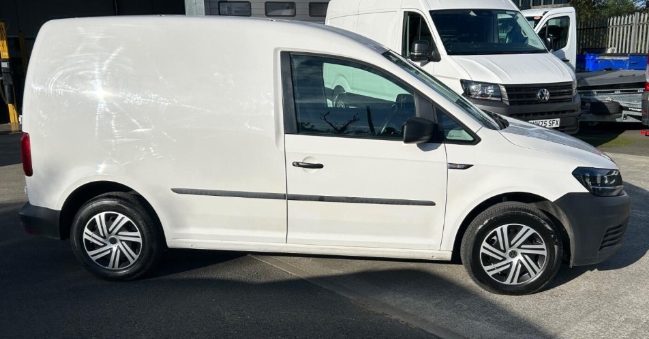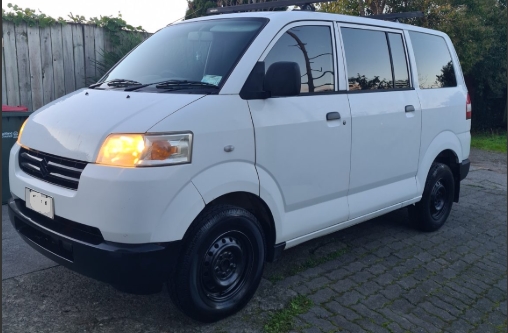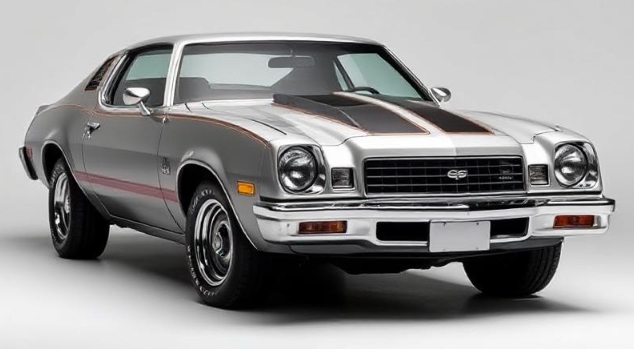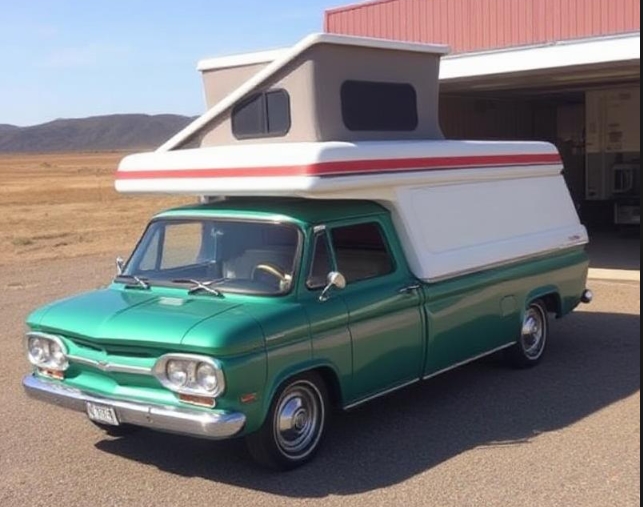The Volkswagen Caddy: A Chronicle of Evolution from Utility Workhorse to Versatile Companion
The Volkswagen Caddy, a name synonymous with utility, practicality, and a surprising degree of adaptability, boasts a lineage stretching back over four decades. What began as a straightforward, no-frills panel van has steadily evolved into a multifaceted vehicle, catering to a diverse range of needs from commercial fleets to family adventures. This article delves into the rich history of the Volkswagen Caddy, tracing its transformation through distinct generations, highlighting key models, and exploring the evolution of its trim levels.
Generation 1: The “Type 14” and the Birth of a Utility Icon (1979-1995)
The genesis of the Caddy can be traced back to a clever European adaptation of the Volkswagen Golf Mk1. The need for a compact, cost-effective commercial vehicle led to the development of the Caddy, officially launched in 1979. Initially based on the Golf’s platform, it was a far cry from the sleek designs of later iterations. Produced initially in Sarajevo, Yugoslavia, it was also sold in North America as the Volkswagen Rabbit Pickup and in other markets under different names.
Core Concept: The Type 14 Caddy was fundamentally a two-door pickup truck. Its design was simple and robust, prioritizing cargo space and durability. The front end shared the distinctive rounded headlights and grille of the Golf Mk1, while the rear featured an open, flatbed cargo area.
Models and Trim Levels: In its early years, the Caddy was primarily a singular model focused on utility. Options were limited, emphasizing its commercial purpose.
Basic Panel Van: This configuration offered an enclosed cargo area, ideal for tradespeople and delivery services.
Open Pickup: The classic flatbed version, offering maximum cargo flexibility.
Trim Levels: While not as stratified as modern vehicles, there were minor variations in equipment. Base models were stripped-down workhorses, while some could be optioned with more comfortable interiors, a slightly upgraded engine, or metallic paint. The focus remained squarely on function over form.
Powertrain: Early Caddys were powered by a range of small, efficient petrol and diesel engines derived from the Golf lineup. These typically included engines like the 1.5-liter petrol and the 1.6-liter diesel, offering modest power outputs suitable for urban and suburban use.
Legacy: The Type 14 Caddy established the Caddy’s reputation as a reliable and economical light commercial vehicle. Its simple mechanics and rugged construction made it a popular choice for businesses and individuals seeking a no-nonsense work tool.
Generation 2: The “Type 9K” – A More Sophisticated Approach (1995-2004)
The second generation, the Type 9K, arrived in 1995 and marked a significant departure from its predecessor. While still based on a Volkswagen platform, this time the Polo Mk3, the Caddy adopted a more modern, enclosed body style, transitioning from a pickup to a true van. This shift signaled a broader appeal, extending beyond purely commercial applications.
Design Evolution: The Type 9K featured a more aerodynamic and contemporary design. It presented as a compact panel van with sliding side doors for improved access and a more integrated rear end with a conventional tailgate or barn doors. The front end adopted the styling cues of the Polo Mk3.
Models and Trim Levels: This generation saw a greater diversification of models and trim levels, reflecting its expanding customer base.
Caddy Van: The core commercial offering, available in standard and long-wheelbase (Caddy Maxi) variants.
Caddy Kombi/Combi: This passenger-oriented version introduced rear seating, making it suitable for small families or businesses requiring a mix of cargo and passenger transport.
Caddy Tramper: A lifestyle-oriented variant introduced in the early 2000s, aimed at campers and outdoor enthusiasts. It often featured camping equipment, such as a fold-out bed and storage solutions.
Trim Levels:
Base/Standard: Focused on core functionality, similar to the previous generation but with more modern amenities like power steering.
Comfortline/Highline (later designations): Introduced more creature comforts, including improved upholstery, electric windows, central locking, and better sound insulation.
Special Editions: Volkswagen also produced various special editions throughout this generation, often with sportier styling or enhanced features.
Powertrain: The Type 9K offered a more refined engine selection, including updated versions of Volkswagen’s reliable petrol and TDI diesel engines. Common engines included 1.4i, 1.6i petrol, and 1.9 SDI and TDI diesel options, providing better performance and fuel efficiency.
Technological Advancements: This generation saw the introduction of more advanced features, such as ABS (Anti-lock Braking System) and airbags becoming more common.
Generation 3: The “Type 2K” – Car-Like Comfort and Versatility (2004-2015)
The third generation, launched in 2004, represented a quantum leap in the Caddy’s evolution. Built on the Volkswagen Group’s versatile PQ35 platform (shared with the Golf Mk5 and Touran), the Type 2K offered a design that was significantly more car-like in its refinement and comfort. This generation truly cemented the Caddy’s dual identity as both a capable commercial vehicle and a practical family car.
Design Philosophy: The Type 2K boasted a sleeker, more modern exterior design with a distinctively rounded front and a more sculpted body. The interior also underwent a significant upgrade, featuring a dashboard layout and materials more akin to a passenger car.
Models and Trim Levels: This generation saw an explosion of variants, catering to an even wider spectrum of needs.
Caddy Panel Van: The workhorse, designed for trades and deliveries, available in standard and long-wheelbase (Caddy Maxi) configurations.
Caddy Maxi Kombi/Combi: The passenger version, now more spacious and comfortable, offering seating for up to seven passengers in some configurations.
Caddy Life: A more comfort-focused passenger variant, often featuring more premium interior appointments and enhanced safety features.
Caddy Maxi Life: The extended-wheelbase passenger version, providing even greater interior space.
Caddy Tramper (continued): Refined versions of the lifestyle vehicle.
Caddy Alltrack (introduced later in the generation): A more rugged, SUV-styled variant with increased ground clearance and distinctive styling cues, aimed at active lifestyles.
Trim Levels:
Startline/Pro (commercial focused): Basic, durable, and no-nonsense, with essential features.
Trendline: A step up in comfort and equipment, including air conditioning, better audio systems, and body-colored elements.
Comfortline: Offering a more premium feel with enhanced upholstery, climate control, and additional convenience features.
Highline: The top-tier trim, boasting the most luxurious appointments, advanced infotainment, and a wider array of optional extras.
Optional Packages: Various option packs were available, allowing further customization, such as sports suspension, panoramic sunroofs, and advanced driver assistance systems.
Powertrain: The Type 2K offered a comprehensive range of modern TSI (turbocharged direct injection) petrol engines and robust TDI diesel engines, including the highly popular 1.9 TDI and later 2.0 TDI units. These engines provided a good balance of performance, fuel economy, and emissions compliance. DSG (Direct-Shift Gearbox) automatic transmissions also became available.
Safety and Technology: This generation saw a significant increase in safety features, with multiple airbags, electronic stability control (ESC), and ISOFIX child seat anchors becoming standard or widely available. Infotainment systems also evolved, with touchscreens and connectivity options appearing.
Generation 4: The “SK” – Refined Design and Advanced Technology (2015-Present)
The fourth generation, introduced in 2015, presented a more evolutionary update rather than a radical redesign. Volkswagen focused on refining the Caddy’s already successful formula, enhancing its technology, safety, and efficiency while maintaining its core strengths. The “SK” generation also saw a modular approach, with the commercial and passenger versions now more clearly defined.
Exterior and Interior Refinements: The SK features a sharper, more angular design language, with updated headlights, grilles, and bumpers. The interior received a significant overhaul, with a modern dashboard, improved materials, and a more sophisticated infotainment system.
Models and Trim Levels: The lineup remained extensive, with a clear distinction often made between commercial and passenger variants.
Caddy Cargo (formerly Panel Van): The dedicated commercial vehicle, available in standard and long-wheelbase (Caddy Maxi Cargo) variants.
Caddy Kombi/Combi: The versatile passenger/cargo hybrid.
Caddy California (discontinued in some markets): A successor to the Tramper, emphasizing leisure and camping capabilities.
Caddy Alltrack (continued): The rugged, SUV-styled version.
Caddy California (new iteration): A more advanced and integrated camper van solution.
Trim Levels:
Caddy Cargo: Focused on practicality and durability, with essential features.
Caddy Commerce: A step up for commercial use, adding more comfort and convenience.
Caddy Commerce Pro: The top-tier commercial offering.
Caddy: The entry-level passenger model.
Caddy Style (formerly Trendline/Comfortline): Offering a blend of style and comfort, with enhanced interior and exterior features.
Caddy California: Equipped for leisure and travel.
Caddy Alltrack: Differentiated by its rugged styling and enhanced capability.
New for This Generation: The “Edition” trim was introduced, offering specific styling packages.
Powertrain and Efficiency: The SK generation embraced Volkswagen’s latest range of TSI petrol and TDI diesel engines, focusing heavily on fuel efficiency and reduced emissions. The introduction of AdBlue technology for diesel engines became standard to meet stricter emissions regulations. Advanced driver-assistance systems, such as adaptive cruise control, emergency braking, and parking assistance, became widely available, significantly enhancing safety.
Technological Advancements: The infotainment systems were updated with larger touchscreens, smartphone integration (Apple CarPlay and Android Auto), and connected services. Innovations like the digital cockpit (in higher trims) further modernized the interior.
.

.
The Future of the Caddy: Electrification and Beyond
As the automotive industry shifts towards electrification, the Volkswagen Caddy is poised to embrace this change. The Volkswagen ID. Buzz Cargo is set to act as the electric successor to the commercial Caddy in the long term, while a fully electric e-Caddy has also been explored. The current SK generation will likely see further updates with hybrid powertrains and continued advancements in driver assistance and connectivity, ensuring that the Caddy’s legacy of adaptability and utility continues to thrive in an ever-evolving automotive landscape.
From its humble beginnings as a utilitarian pickup truck, the Volkswagen Caddy has undergone a remarkable transformation. Through four distinct generations, it has consistently adapted to market demands, evolving from a workhorse to a versatile companion. Its ability to seamlessly blend commercial capability with passenger comfort, coupled with continuous technological advancement and a diverse range of models and trim levels, has cemented its status as a beloved and enduring icon in the automotive world. The Caddy’s journey is a testament to Volkswagen’s commitment to practicality, innovation, and meeting the diverse needs of its customers.







